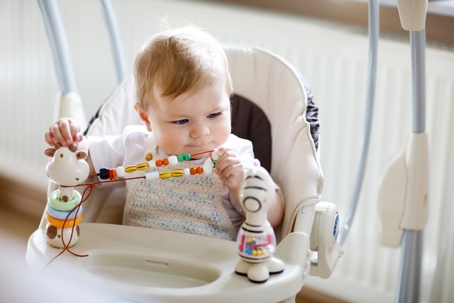Recalls on Baby Swings
If you have a baby, doubtless you want your child to have the best. You want to purchase quality, well-made products that will protect your baby from harm and give him or her the comfort that he or she needs.
Recently, the Consumer Product Safety Commission created new rules for infant swings in order to make sure that babies will not be at risk when they are in these contraptions. In the past, the CPSC has overseen recalls of baby swings that would malfunction, and cause the child to fall or slip under the swing. In some cases, babies became entrapped in the swing and even died.
Baby Swing-Related Injury Statistics
While parents should never leave an infant in a swing unattended, it is also important that the products are safe enough for reliable use. Within the past year, the CPSC received 351 reports of infants that had been injured in swing-related incidents. Two children died as a result of these swing tragedies, and 24 children were hospitalized in critical condition after they were harmed.
The rest of the reports claimed that the child has recovered from the incident. Because children are fragile in their first year, safety is essential with any baby product. The CPSC wants swing manufacturers to be overly cautious when they are creating these products for small infants in America.
That is why the CPSC in Washington D.C. has recently announced that they will imply new federal mandatory safety standards for infant swings. All manufacturers of this product must abide by the new standards or they can be punished. The vote for the new standards was unanimous.
The infant swing manufacturing changes only include swings that are made for newborns and babies that cannot sit up unassisted. The new federal standard requires that these swings have a more explicit warning label that talks about how to prevent a slump over death. The new labels must be strong so that they will not peel off the swing and must have detailed instructions about how to prevent death.
The warning must also advise consumers to only use the swing when in its most reclined position until an infant is at least 4 months old. The seat should not be pushed into a seated position until the baby can sit up on his or her own without assistance.
Stability Test
In addition to this, the new swings must pass a stability test to prove that they won’t tip over while they are in operation. If the swing does not pass this test, it cannot be sold in stores. The swings must also pass a test that proves that the swing won’t fold over at the wrong time.
Oftentimes these infant swings are foldable so that they are portable for parents who are going from place to place. While this may be convenient, it can be very dangerous if the swing has a tendency to collapse while the baby is inside.
Restraint Systems Test
All swings must also undergo a test that strains the restraint systems to make sure that babies can’t slip through the ropes. As well, the test needs to prove that the restraints won’t break when pressure is applied to try and pull them out of the places where they are locked in.
Battery Test
As well, the new swings must have a cradle swing surface that remains relatively flat while in motion and while at rest. This is to ensure that the baby won’t tip out of the swing while it is rocking too high to one side. All swings that are operated by batteries have to undergo additional tests to make sure that there won’t be any battery leakage and won’t overheat.
In the past, this has caused children to suffer minor burns. Whenever the swing comes with a toy mobile that dangles above the baby’s head, it is important that the toys are not detachable. If the toys can come off when pulled at, then the swing can no longer be sold in stores.
Weight Limit/Load Test
All swings with seat angles greater than 50 degrees must have shoulder strap restraints and it is highly recommended that consumers use these shoulder straps to keep their children from tumbling out of the swing. Each swing also needs to pass load tests which prove how much weight the swing can sustain without breaking. The weight limit must be listed on the packaging so that a parent does not place a heavy child in the wing out of ignorance.
The Denny Keysar Child Product Safety Notification Act
On May 7th, 2013, any swings that do not meet these new standards will be declared illegal. The Denny Keysar Child Product Safety Notification Act Section 104 of the Consumer Product Safety Improvement Act of 2008 announces that the CPSC has the right to issue safety standards to all infant products.
The CPSC has recently changed the manufacturing standards for:
- Swings
- Cribs
- Baby bath seats
- Baby walkers
- And other products
How We Can Help
If your baby was harmed while in one of these swings, then you should contact the CPSC and report the incident. As well, you need to hire a personal injury attorney to represent you in a product liability claim.
You can call a Hartford personal injury lawyer at David A. Zipfel & Associates, LLC today if you want optimum representation from a firm that has been in practice since 1978. We will work hard to prove that the company was negligent when the created the product did not adhere to the new standards issued by the CPSC. Contact us today!

